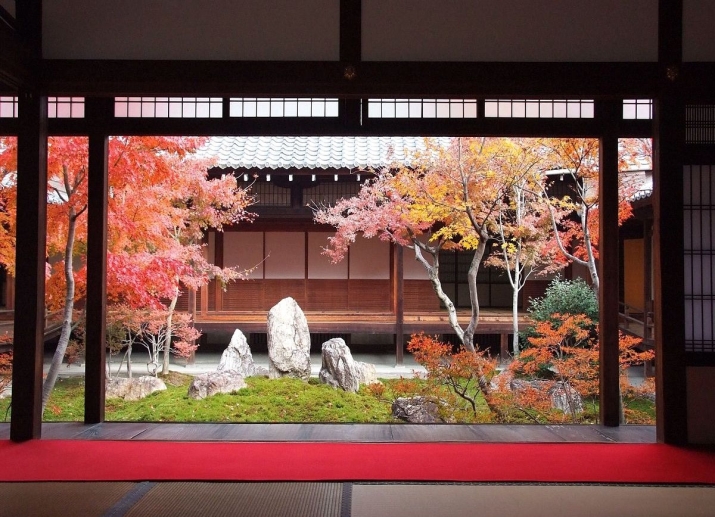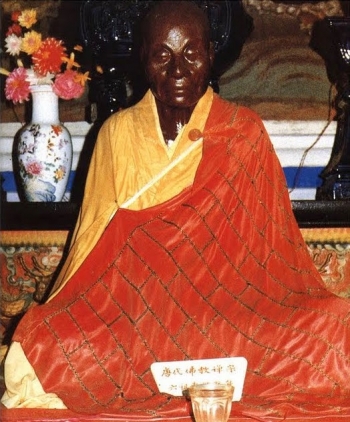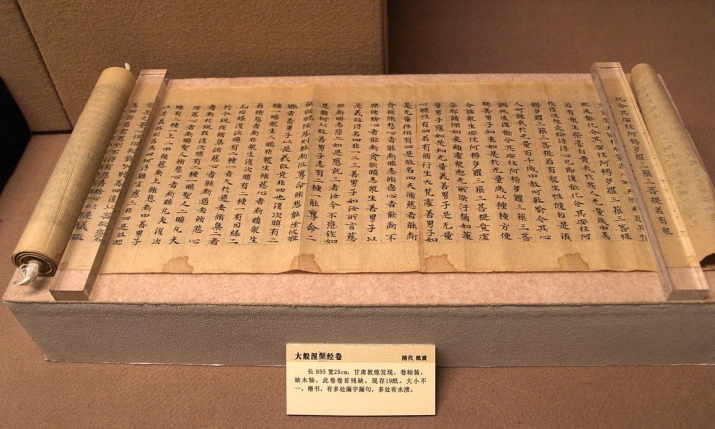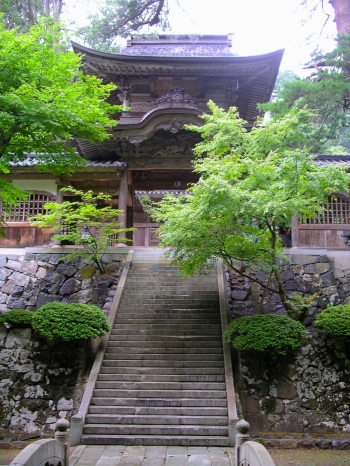From the Jindge Records of the Transmission of the Lamp (Jingde chuangdeng lu), Dōgen borrows the first encounter between the fifth and the future sixth patriarch of the Zen Buddhist tradition. When told that the future sixth patriarch comes form Lingnan, the fifth patriarch remarked, “People from Lingnan do not have Buddha-nature, so how can you become a Buddha?” (T 51.2078.746). In addition, Dōgen cites a story, published after his death in the Combined Annals of Buddhas and Patriarchs (Fozu tongji), about the first encounter between the fourth and the fifth patriarchs while the future fifth patriarch was still a child. When the fourth patriarch asserts, “Buddha does not have a name,” the child quips, “His nature is empty, therefore you say he does not have a name” (T 49.2035.292). Finally, from the Platform Sutra of the Sixth Patriarch (Liuzu tanjing), Dōgen cites the assertion that “impermanence is Buddha-nature” (T 48.2008.359).
FEATURES|COLUMNS|Buddhism in Japan
Does a Philosopher Have Buddha-nature?
 Kennin-ji where Dōgen stayed after his return from China to Japan. From yurukaze.com
Kennin-ji where Dōgen stayed after his return from China to Japan. From yurukaze.comIn my previous article,* I introduced a method of reading Japanese Buddhist texts, especially writings by the Japanese Zen master Dōgen (1200–53).** Here, I would like to explore one of his fascicles, namely Shobogenzo bussho (DZZ 1: 14–35). I approach this text as a scholar of Japanese Zen Buddhist thought who is trained in philosophy and religious studies and who has some experience of the practice of Zen. In addition, I have taken the precepts in the Soto Zen Buddhist tradition founded by Dōgen (Kopf 2014).
The title of my essay obviously recalls the well known encounter between Zen master Zhaozhou Congshen (778–897) and one of his disciples that can be found in quite a few of the Zen records (Chn. chanyulu) as well as in the first case of the koan collection of called Wumenguan: “A monk asks master Zhaozhou: ‘does a dog have Buddha-nature, or not?’ Zhaozhou answers ‘wu’ (literally, ‘no’)” (T 48.2005.292). Wumen concludes his comments on the dialogue with the two lines: “If you wonder even to some degree whether it has (Buddha-nature) or not, you lose your body, you lose your life” (T 48.2005.293).
This section of the Wumenguan picks up and reflects on a concept central to Mahayana Buddhism, the concept of “Buddha-nature” (Chn. foxing). This concept evokes a shared commonality of all sentient beings and, according to some texts, everything that exists. It is formative of tathagatagarbha (literally, Buddha-womb) thought in Mahayana Buddhism and central to Japanese Buddhism in general. Because of the historical importance of the temple Enryaku-ji on Mt. Hiei, where Tendai Buddhism is headquartered, tathagatagarbha thought in the form of the “doctrine of original enlightenment” (Jpn. hongaku shiso) has influenced if not pervaded most of Japanese Buddhist thought and practice.
Dōgen, who started his monastic career in the Tendai school of Buddhism, is no exception. In some sense, the obvious tension between the notions of “original” and “acquired enlightenment” (Jpn. shikaku)—that is, the belief that severe practice is necessary to facilitate the attainment of buddhahood—inspired his critical reading of Buddhist doctrines and scriptures. Dōgen dedicated his fascicle Shobogenzo bussho to the exploration of the “thought of original enlightenment.” In some sense, this fascicle constitutes a reading of the Mahaparinirvanasutra through the lens of Chinese Zen (Chn. Chan) texts for Japanese monks in the Kamakura period (1185–1333). In particular, he interpreted the assertion that “all sentient being possess Buddha-nature. Buddha permanently resides without any change” (T 12.374.522) by using three anecdotes from the Zen canon.
 Huifeng's "flesh body bodhisattva" (Chn. roushen pusa) at Nanhuasi. From dabase.org
Huifeng's "flesh body bodhisattva" (Chn. roushen pusa) at Nanhuasi. From dabase.orgUsing these three encounter dialogues as his heuristic key, Dōgen develops a fourfold conception of “Buddha-nature:”*** “being-Buddha-nature” (Jpn. yu-busshō) (DZZ 1:14), “no-Buddha-nature” (Jpn: mu-busshō) (DZZ 1:18-9), “empty-Buddha-nature” (Jpn. kū-busshō) (DZZ 1:19),**** and “impermanent-Buddha-nature” (mujō-busshō).***** Why does Dōgen make this conception so complicated? What is behind his creative re-reading of selected texts form the Buddhist canon?
I think that Dōgen’s method of reading texts reveals a lot about his agenda. He stands firmly in the Zen tradition, yet his teaching is unique and not a mere repetition of the masters before him. The concept of “Buddha-nature” is central to his teaching. In fact, the purpose of meditation, to Dōgen, is “to verify” (Jpn. sho suru) (DZZ 1:7) and “to make present” (Jpn. genjo) Buddha-nature. However, to prevent the reification of “Buddha-nature,” he introduces the notion of “no-Buddha-nature,” to eschew the dualism of Buddha-nature and no-Buddha-nature,” Dogen frames the neologism “empty-Buddha-nature,” and to preclude the absolutization of emptiness “impermanent-Buddha-nature.” To Dōgen, the attainment of buddhahood is not a once-and-for-all experience but has to be actualized every single moment of our lives.
 Scroll of the Mahaparinirvana Sutra. From wikiwand.com
Scroll of the Mahaparinirvana Sutra. From wikiwand.com Stairs to the dharma hall at Eihei-ji. From Gereon Kopf
Stairs to the dharma hall at Eihei-ji. From Gereon KopfWhat can we today learn from Dōgen’s creative reading? I think two things: that spirituality and morality are works in progress; we have to cultivate them anew every single day. In the same sense, Dōgen’s is not the final teaching or interpretation. In the same sense in which Dōgen combined Buddhist scriptures from India and China to develop his understanding of the Dharma and to apply the teachings of the sutras and the Zen records to Kamakura Japan, we are challenged to verify the teaching of Buddha-nature in our own lives and to make it relevant to the 21st century. This is the challenge in the text discussed today.
* How to Read Japanese Buddhist Texts? (Buddhistdoor Global)
** I would like to thank the providers of the Chinese Buddhist Electronic Text Association (CBETA) and Charles Muller for his Digital Dictionary of Buddhism, which constitute invaluable resources for Buddhist Studies.
*** For a closer discussion of this fourfold conception of “Buddha-nature” see Kopf 2014.
**** This concept is based on the phrase “Buddha-nature is empty” (Jpn. busshōkū) used by both Dōgen (DZZ 1:19) and Buddhist texts such as the Dasheng weishi lun. (T 31.1589.70)
***** This is a variation on “impermanence-Buddha-nature” (mujōshabusshō) used by Dōgen. (DZZ 1:21)
References
Kopf, Gereon. 2014. “When all dharmas are the Buddha-dharma:” Dogen as comparative philosopher.” Dogen and Soto Zen: New Perspectives. Ed. Steven Heine. Oxford: Oxford University Press.
Dogen zenji zenshu (Complete Works of Zen Master Dogen). 2 volumes. Ed. Doshu Okubo. 1969–70. Tokyo: Chikuma Shobo. [Abbr. DZZ]
Taisho Taizokyo (The Taisho Edition of the Buddhist Canon). Ed. by Junjiro Takakusu and Kaigyoku Watanabe. 1961. Tokyo: Taisho Shinshu Daizokyo Kankokai. [Abbr. T]














